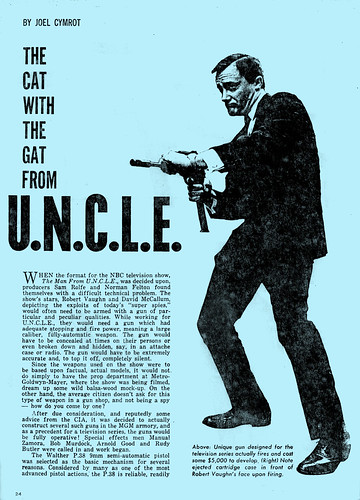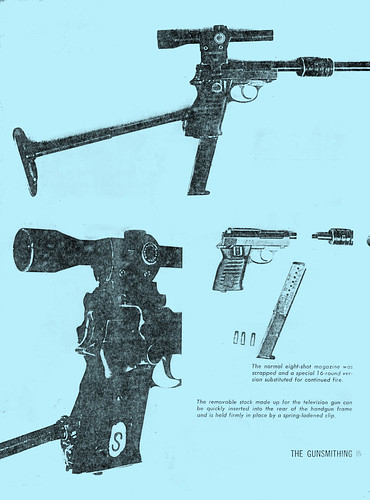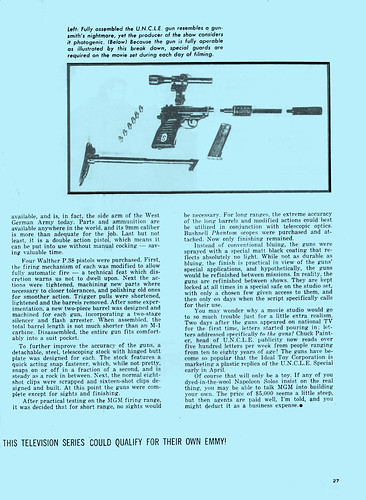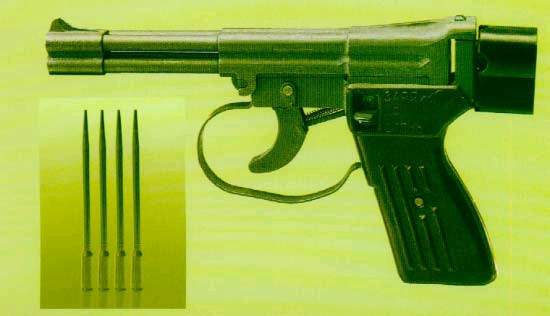Click here or on the picture below to see more.
Monthly Archives: June 2008
Empty collar
Mangrove project
Wordle
New project page
I just put up a new project page to document some work on a brackish water Southeast Asian mangrove biotope-ish aquarium. It’ll always be available from the ‘Pages’ section in the right margin (way down). Not sure how I’ll indicate updates – maybe just more miniposts like this…
Conspiracy, mashups and correlation
- Via Bruce Sterling, a great series of summer reading lists.Lots of interesting books – two that I’m going to put in my queue: The Resurrectionist
and Dark Mission.
Feral House, publishers of Dark Mission, print some wild stuff – this looks to be no exception.
This weird yet well-researched book by a former science advisor to Walter Cronkite argues that NASA is an occult control system, created by Nazi SS officers and high-ranking U.S. Free Masons, that discovered alien technological artifacts on the moon. Hoagland believes the “secret government” has been reverse-engineering alien technology for decades.
- One of the folks tapped for summer reading materials in the link above is Paul D. Miller, DJ Spooky :: That Subliminal Kid. I heard an interview with him a few days ago – I especially like his notion of “artist as search engine”. I think there’s a sense where this has always been true – part of the artist’s job is pattern recognition – pulling something (at best, something unexpected) out of the ground. An MP3 of the interview is here and you can click here to get to Miller’s Hail the Jewel in the Blue Lotus mix (Buddhist hip hop).
- Another dispatch from the digital edge – The End of Theory: The Data Deluge Makes the Scientific Method Obsolete. Not sure how I feel about tossing theory over the side… Update – an example of scientific petabyte computing – the Large Hadron Collider – 2Gb of data every 10 seconds.
Apropos of absolutely nothing, a picture of Barbie finials on a miniature trebuchet.
Life-changing books
I’m going to take up Kevin Kelly’s challenge and list some things I read that changed my life. The list is short – my feeling is that if the book does not immediately come to mind, it’s probably disqualified (I do reserve the right to add, though – “a foolish consistency is the hobgoblin of petty minds” and all).
- My Side of the Mountain – I read this when I was 10 or so – I already loved the outdoors; this book gave me a hunter-gatherer ideal to aspire to.
- Stranger in a Strange Land/The Moon is a Harsh Mistress – I’m cheating and combining two of Heinlein’s best into one entry. I know there’s a lot to argue about in these books, but at thirteen they were a pretty heady mix of libertarianism, sex, and confirmation of suspicions that everything you know is wrong. Got me ready for the anti-authoritarian streak (persists to this day) reinforced by:
- One Flew Over the Cuckoo’s Nest – I read it in high school – a time when questioning authority needs to happen. It did – never wore off. It also gave me a taste for signs, symbols and layers; thank you, Noni Randolph (HS English teacher). Ms. Randolph asked me once to count the number of fishermen that go with McMurphy on the party boat trip, smiled, and walked off. Obviously, I still remember the moment, and the moments afterward.
- The Whole Earth Catalogs – you are not alone – in fact, there are a ton of people way ahead of you.
- A Rage for Falcons – relit the fire that My Side of the Mountain kindled. “This [falconry] is do-able – it’s something you [I] can pursue!”
Three of a kind
This was originally going to be another installment of “Got a a match?” but then Modern Fred posted something to his Flickrstream so interesting and in tune with the topic that I really had no choice – trips it is. The subject – odd superspy/special ops firearms.
First up – ModFred’s contribution. The U.N.C.L.E. Special was an icon of my kid-hood – I loved the show and at one point had an U.N.C.L.E toy (Mattel?): a radio that unfolded into a semi-auto cap carbine. I was totally covert. I guess I’d always assumed that the Special was just a prop cobbled together in a studio shop – not so. It was based on a Walther P38, with beaucoup added pieces.
*
*
*
Questions remain. If the article above is to be believed, the pistols were converted to full auto. I don’t remember seeing the gun fired in an episode – it would be interesting to know if it Napoleon or Illya ever resorted to spray ‘n pray. “After practical testing on the MGM firing range, it was decided that for short range, no sights would be necessary.” Say what? How many real (non-blank) rounds did these beasties ever fire? Was accuracy ever an issue? I mean, it’s not like the THRUSH agents really needed to get all shot up. Finally – why did THRUSH and Tania both favor a scoped M1?

*
*
Second verse, same as the first, a whole lot quieter, accuracy usually worse. The Gyrojet family was a new approach – not guns, but rocket launchers. Gyrojets made an appearance in You Only Live Twice – certifying them as superspy material. Gyrojets were from opposite world in more ways than one – unlike every other gun I’m familiar with, where a moving firing pin whacks a stationary cartridge, in a Gyrojet a hammer slaps the nose of the rocket, sending it back into contact with the pin.
*
Gyrojet weapon was one of the rare attempts to develop an entirely different weapon with some unique properties. This weapon tried to achieve several goals, including the low noise of firing and underwater fire capabilities, along with significant firepower and penetration. In doing so, it was far from any conventional firearms; in fact, it was a hand-held, multi-shot rocket launcher that fired “armor piercing” projectiles, made from steel and with pointed nose. Each projectile contained its own rocket engine and means for stabilization – either in the form of retractable fins or in the form of inclined jet nozzles which forced the missile to rotate, and thus provide gyroscopic effect for stabilization. Each rocket “motor” burned for about one tenth of a second; maximum velocity of about 380 meters per second (~1250 fps) was achieved at ranges about 20 meters from muzzle, while muzzle velocity was as low as 30 meters per second (~100 fps). Because of that slow acceleration the Gyrojet was almost useless a weapon at short ranges, within 5-7 meters. Another problem, inherent to this weapon, was poor reliability (even in ideal conditions this gun was to misfire about once in every 100 rounds; in actual life it did so much often than that). Add to this very poor accuracy because of insufficient stabilization of projectiles during early stages of trajectory, and you get more of curiosity and collectible piece rather than combat weapon. Probably the only plus of this weapon was that it indeed was more or less silent – when fired, it produced a short hiss, sort of a pierced tire sound, clearly different from any typical gunshot. However, it deserved its place in the history of small arms as one of the very rare attempts to made unconventional combat weapons that worked, even only to some extent. *
The phrase quoted above: “underwater fire capabilities” brings us to the last of the troika – the Soviet SPP-1. Water and air are very different mediums, as anyone who has executed a massive belly-flop can attest. The SPP-1 is a combat frogman’s pistol – designed to fire underwater. I’m surprised it works at all, but as the youtube below shows, work it does.
Spetsialnyj Podvodnyj Pistolet
SPP-1 is a non-automatic, manually operated handgun with four barrels. Barrels are hinged to the frame in the same manner as on break-open shotguns. For reloading, barrel cluster is tipped to expose chambers, and four cartridges are inserted into barrels. To speed up ejection and reloading cycle, cartridges are loaded using flat clips, made from steel. The double-action trigger unit consists of a striker, mounting on a rotating base, so during the each trigger pull the striker is cocked and simultaneously rotated to the next, unfired barrel. *
*
Near instant update: Modern Fred responds, “The guns were actually fired full auto in a couple of episodes- one in which the U.N.C.L.E. headquarters are attacked in the parking garage by a Thrush squad, the other was I believe “The Alexander The Greater Affair”. The toy gun you had was I believe a Agent Zero M toy (M for Mattel, the manufacturer)- a very cool series of everyday items that converted to guns. The TV commercials featured a very young Kurt Russell as Agent Zero M.” There you go! Another data point on the unreliability of memory – I conflated U.N.C.L.E and Agent Zero M. Here’s the radio and here’s another Agent Zero M toy I wanted in the worst way. My mom was a nurse long before she became a mother – she could see disaster a mile away – the Sonic Blaster was not going to happen. I couldn’t find the Kurt Russell commercial, but I did find him on Lost in Space – which reminds me – I need to see if the new Chariot model is available yet.
“Oh, they know it’s fixing to be on.”
Another good one from the Gray Lady: Bacon a Hard Way – hunting feral hogs in East Texas.
Doomed
I was running errands this morning; listened to an interesting edition of The Exchange – NHPR’s morning call in program. Today’s topic was “Economic Turbulence in the Friendly Skies!” – a survey of the (sorry) state of the US domestic air carriers. If you’re interested, you can listen at the link above or download an mp3 here. The talk about the new baggage fees (we get to pay for the privilege of having the carrier lose our luggage and/or have sticky fingered TSA employees help themselves) motivated me to call in – I expressed my disappointment with the current state of the skies and ranted a bit about my efforts to fly as little as possible (it was a little better than yelling, “You kids! Get off my lawn!”, but not by much).
After thinking about it a bit, I find it difficult to imagine how the airlines are going to dig out of the hole they find themselves in. Let’s take some of the points made on the show and see what they indicate.
Fuel costs. I just don’t see fuel costs dropping significantly in the medium to long term. High prices will drive down consumption and cause (I hope) some innovation – it’s clear that we need to stop being such hydrocarbon junkies – but the world will continue to bid up the price of oil as living standards rise. Falling living standards – a crash or a long period of stagflation – is another possibility, but that bring it’s own set of issues – economic disaster is a possibility, but difficult to predict. The airlines are going to have to deal with $170/barrel (their cost) fuel – praying for an improbability (cheap oil) is not a business plan.
The Faustian Ticket Bargain. American casual fliers have gotten used to crazy-cheap air fare. Folks expect to be able to fly just about anywhere in the US for a few hundred dollars. David Field called these folks ‘low yield’ passengers – I’m reminded of the old joke about selling below cost – how does one make up the difference? Volume! Can some of the incremental stuff (baggage charges, etc.) extract enough money to make low-yield passengers worthwhile?
Business Travelers. The holy grail of the airline business. Some business travel is unavoidable, but as costs go up businesspeople will travel less (duh!). Conventional wisdom seems to be that companies love sending people on the road. That may be true (not sure at all) for sales/marketing types – the marketroids may be the airlines core constituency. For non wining-and-dining applications information is relatively cheap to move when compared with kilos of mass. Already, folks are meeting in virtual environments – expect more/better.
The thing airlines offer is speed. Speed comes at a price – airplanes are inefficient. In the short to medium term, fuel efficiency is going to be more and more important (I’ll bet you can get a hell of a deal on an SUV at any dealership in the US right now). What the airline industry will look like in 5 years is anybody’s guess, but I’ll bet it’ll be smaller and tickets will cost a lot more. Whether customer service remains as awful – I’m a pessimist at heart…
Two tech snippets
Firefox 3. It’s out, I’ve downloaded and installed it and so far I’m liking it a lot. Biggest single thumbs-up? It does seem to be significantly faster – huge win. If you’re extra cautious, you may want to give it another few days before taking the plunge, but I haven’t had any trouble yet. Extensions I’m running: Better Gmail, Delicious Bookmarks, Quickdrag and Tab Mix Plus.
Fabjects/3D printing. I’ve posted about fabbing at home; here’s an interesting perspective on the topic:
I do believe that home manufacturing will develop in the future and feel more strongly about it now than ever. People that manufacture at home, however, will serve as “providers” that sell to others, primarily on the web. Individuals will see it as a low-risk, low-overhead business opportunity to manufacture from their basement, spare room, garage, or dorm room. They will discover a niche market and serve this market from their home. A few are already doing it.
Case in point: Fabjectory is a one-person company that has been producing models from Second Life, Google SketchUp, and Nintendo Mii for some time. The price for a color model from Fabjectory is typically $50–200. The home-based operation has been written up in The Wall Street Journal, USA Today, The New York Times, Wired, and other major publications. I am also aware of others here in the U.S. and abroad that are offering part-making services from the comfort of their homes.
via Bruce Sterling.
Even the ants, saved in a Noah sugar-pan
Some random links…
- COOP’s posted another bit of musical goodness – check his mix page for the whole list. At the moment, I’m very partial to Ghetto Organ and Bloodclot. Bloodclot has one of my desert island tunes on it – Ark of the Covenant – love it!
*
- View the early chemical-powered projectile weapons over at BibliOdyssey. I’m semi-successfully resisting the temptation to make a petard joke.
*
- Wicked pissa monstruos diabolicos trading cards. (via BB)
- And an odd submersible, seen by the side of the road yesterday:

















